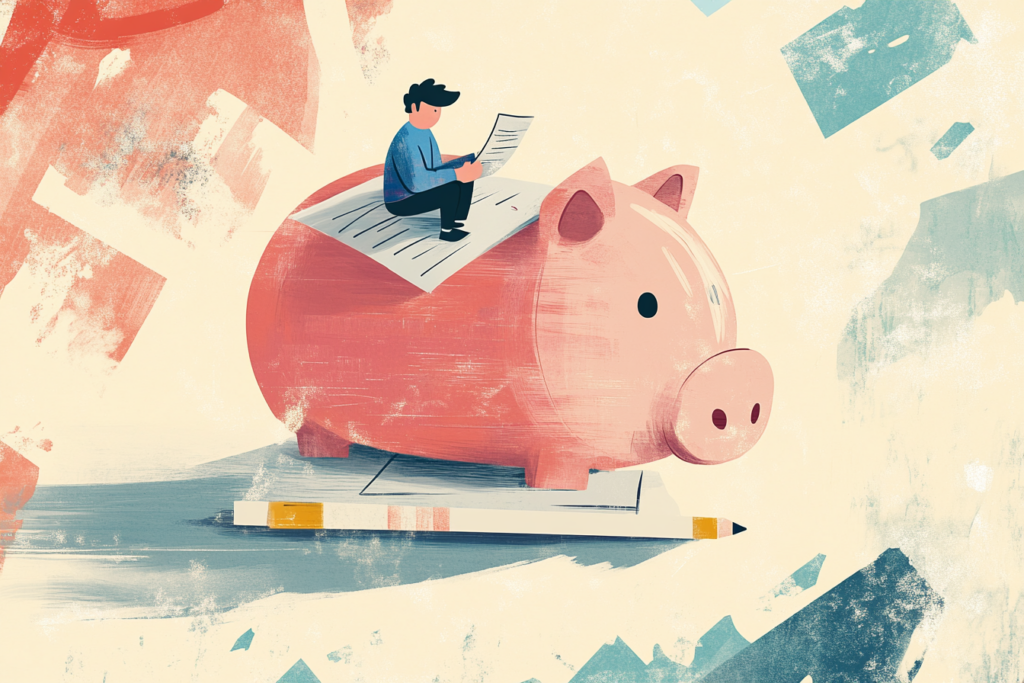Debt can feel like a storm cloud that follows you wherever you go. Whether you are drowning in credit card debt, student loans, car payments, or personal loans, debt can play a huge role in your future financial decisions and your future. But here’s the truth: You can take control. And it starts with one thing—creating a budget that actually works.
Let’s get real. This isn’t about pretty spreadsheets full of perfect numbers. This is about building a budget that fits your life, with space to breathe, a clear path forward, and light at the end of the tunnel towards financial freedom.
Keep reading, and we will share how to get started with a few easy steps.
Step 1: Know Exactly What You Owe
Before you can truly begin to budget for debt repayment, you need to understand where you stand, meaning how much you actually owe. Gather all your debts in one place, and make sure not to leave anything out. It might be easiest to gather the last 3-6 months of bank statements to truly paint a clear picture of your financial situation.
Calculate the following for any outstanding debt:
- Total remaining balance
- Minimum monthly payment
- Interest rate
- Due date
Common debts include:
- Credit cards
- Student loans
- Auto loans
- Personal loans
Once you complete a full picture, you can prioritize.
Step 2: Track Every Dollar You Spend

Most people underestimate their spending. A lot. So, before setting up a budget, track your expenses for one full month.
Include:
- Rent/mortgage
- Utilities (electricity, trash, cell phone, cable, etc.)
- Groceries
- Transportation
- Insurance
- Subscriptions
- Entertainment
- Dining out
- Everything else
Use apps, bank statements, or plain pen and paper. It doesn’t matter how; just make it honest. This step shows you where your money’s going—and where it shouldn’t be going.
Step 3: Build Your Baseline Budget
Now it’s time to build a budget. Think of it as a financial blueprint.
Start with your monthly income (after taxes). Then, list your essential expenses:
- Housing
- Food
- Utilities
- Transportation
- Insurance
Next, set aside money for minimum debt payments. Not the extra payments yet—just the required ones. Once those are covered, see what’s left.
What you’re left with is your flexible money. This can go toward:
- Extra debt payments
- Savings
- Non-essentials
This is where priorities come into play.
Step 4: Choose a Debt Repayment Strategy
Here’s where it gets strategic. You’ve got two popular methods to choose from:
- Focus on your smallest debt first.
- Pay extra on that one while making minimum payments on others.
- Once it’s gone, roll that payment into the next smallest debt.
- Pros: Quick wins, motivational boost.
2. The Avalanche Method
- Focus on the debt with the highest interest rate first.
- Save more on interest in the long run.
- Pros: Mathematically efficient.
Pick the one that fits your personality. Are you driven by momentum? Go snowball. Want to save the most money? Choose avalanche.
Step 5: Cut Back Where It Hurts the Least
To free up cash for debt repayment, look at your spending and ask: “What can I live without—for now?”
Some easy cuts:
- Eating out multiple times a week
- Delivery food services
- Premium streaming services
- Monthly subscription boxes
- Impulse Amazon buys
- High-end groceries
Temporary sacrifices can lead to permanent financial relief. Be honest about what matters most. Remember, this isn’t forever.
Step 6: Automate Everything You Can
Set up automatic payments for:
- Minimum debt payments (to avoid late fees)
- Extra payments (if possible)
- Essential bills
Automation takes emotion out of the process. It keeps your momentum going and protects your credit score.
Step 7: Build an Emergency Buffer
Here’s the curveball: Don’t put everything toward debt. Life happens. Cars break down. Pets get sick. Jobs change.
Set aside a small emergency fund—even just $500 to start. This keeps unexpected expenses from pushing you deeper into debt.
Once your high-interest debt is gone, build that fund to 3–6 months of living expenses.
Step 8: Review and Adjust Monthly
A budget isn’t set in stone. Life changes. Income shifts. Expenses pop up.
Every month, review:
- How much you paid toward debt
- What you spent vs. what you planned
- Any new debts or changes
Use what you learn to tweak your budget. Don’t be afraid to adjust categories and reset goals. Stay flexible, but stay committed.
Bonus Tips for Staying on Track
- Celebrate small wins: Paid off a credit card? That’s huge. Acknowledge it.
- Find a debt accountability partner: Talk about your goals with someone who gets it.
- Avoid new debt: Freeze credit cards if you have to. Commit to using cash or debit only.
- Focus on the big picture: Every payment brings you closer to freedom.
Common Budgeting Mistakes to Avoid
- Setting unrealistic goals: Don’t promise to live on $200 a month unless it’s possible.
- Forgetting annual expenses: Budget for things like holidays, car registrations, and birthdays.
- Not leaving wiggle room: Life isn’t perfect. Your budget shouldn’t be either.
- Ignoring interest rates: Always know how much your debt is actually costing you.
Why This Matters
A realistic budget isn’t about punishment—it’s about power. You’re telling your money where to go instead of wondering where it went.
Debt doesn’t have to define you. With a plan, a purpose, and a little discipline, you can turn the tables. You can take back control. And one day, you’ll make your final payment—and breathe a little deeper.
You might also be interested in: Debt Consolidation vs. Debt Settlement: Which Is Right for You







